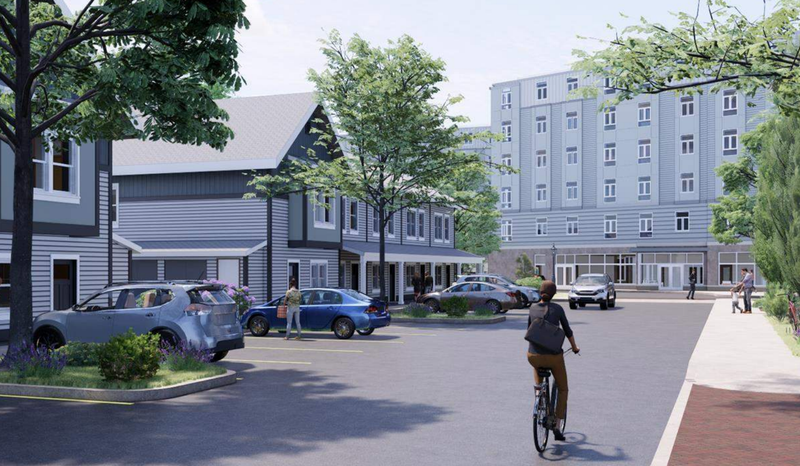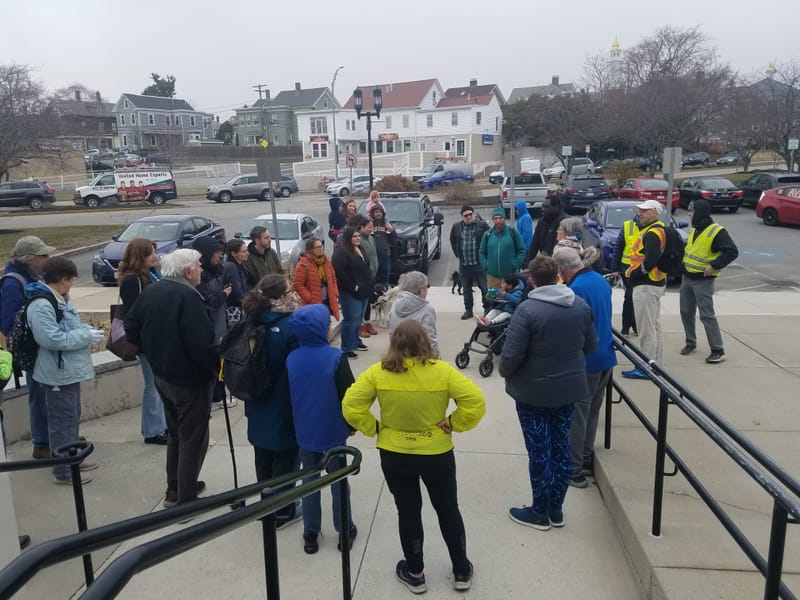Council votes to change its composition in new Medford charter
The Medford City Council on March 4 voted 5-2 in favor of changing the composition of the council from seven at-large members to five at-large members and four district members who would each represent two wards.
The Medford City Council on March 4 voted 5-2 in favor of changing the composition of the council from seven at-large members to five at-large members and four district members who would each represent two wards.
The vote was one piece of the larger City Charter review process. On the agenda that evening for the Committee of the Whole was a review of all the most recent proposed edits to the draft charter, but a motion was made, and passed, to take up the issue of the composition separately.
The previous draft had a ward-based representation system that was proposed by the Charter Review Committee and would see the council composed of one representative from each of the eight wards, plus three at-large members.
What they said
What follows are just a few of the key points councilors made over the course of the nearly 3.5-hour meeting, during which a number of local residents also weighed in via Zoom and in person.
Council Vice President Kit Collins argued that having one councilor from each ward could result in non-competitive races and parochialism.
However, she said, “My belief is no matter how we go forward, Medford will enjoy more localized representation on the City Council than it has before and that is what the residents deserve.”
Councilor George Scarpelli advocated passionately for the ward-based, 8-3 model. Scarpelli said he was against charter review for a long time but going through the process of examining it was one factor that changed his thinking.
It helped him, he said, “understand the importance of equity and what that meant.”
Running for an at-large seat is expensive, Scarpelli said, but “looking at ward representation opens up the avenue for so many of the underprivileged that would never, ever, ever, have the opportunity.”
Scarpelli said to his fellow councilors, “You’re just not listening to all of our residents.”
He also made the case that after two years of hard work and some 200 meetings, the Charter Review Committee presented, “what this community is crying for.” That, he said, is the 8-3 model.
“I beg my fellow councilors,” Scarpelli said. “I know we don’t see eye to eye on a lot of things. But, I know for sure the base that voted you in, that are reaching out to me, they want the 8 ward representation. They want the 11 members.”
Councilor Justin Tseng said, “Let’s talk about equity.”
There’s concern that there’s only one elected person of color in the city, Tseng said, and he sees that every morning when he looks in the mirror.
“I ran on a platform not just to take the easy answer when it comes to equity, but to examine policies through the lens of equity, and that’s a much richer, much deeper, much more complicated conversation,” he said.
Tseng made the case that it is easy to say smaller districts will mean everyone will get represented. The research shows, he said, that drawing majority-minority districts means politicians are not accountable to as many different groups of people.
Councilor Anna Callahan said while there is no way to know what “the community, as monolith” feels about the proposals, the data shows 60% of voters want a mix of ward and at-large representation. She said the council should take everything into consideration, including the research, the statistics that have been gathered, and the opinions of experts.
“I think what’s important for this City Council, what feels important to me as a councilor,” Callahan said, “is to focus on what we can know for certain, which is that what residents want out of this process is a governance structure that works better than before and gets us closer to what we can know will be better for this community, which is more localized representation.”
Council President Isaac “Zac” Bears countered the argument that councilors are not listening. It is not that councilors aren’t listening, he said, it’s that they don’t all agree.
Bears expressed faith in the charter review process, the debate that comes with democracy, and the councilors’ ability to work together. In general, he said, both proposals reflect a consensus of the people that includes keeping a mayor/council form of government and having a balance of power between the mayor and the council, “moving to a hybrid of at-large and local representation for City Council and School Committee,” and “increasing the power of the council relative to the power of the mayor.”
A downside of the 3-8 model, Bears said, is that an incumbent could stay in office for many years and go unchallenged during elections. However, he said he believes the 5-4 model minimizes the costs of more localized representation and maximizes the benefits in terms of fostering equity.
The council’s March 4 vote is not the last say on the issue of the composition of the council. The draft charter will be discussed again during the council’s next regular meeting, Tuesday, March 11, at 7 p.m.
The draft charter then goes to the mayor. Eventually, it will have to be approved by the state Legislature before heading to the voters, hopefully in November.





